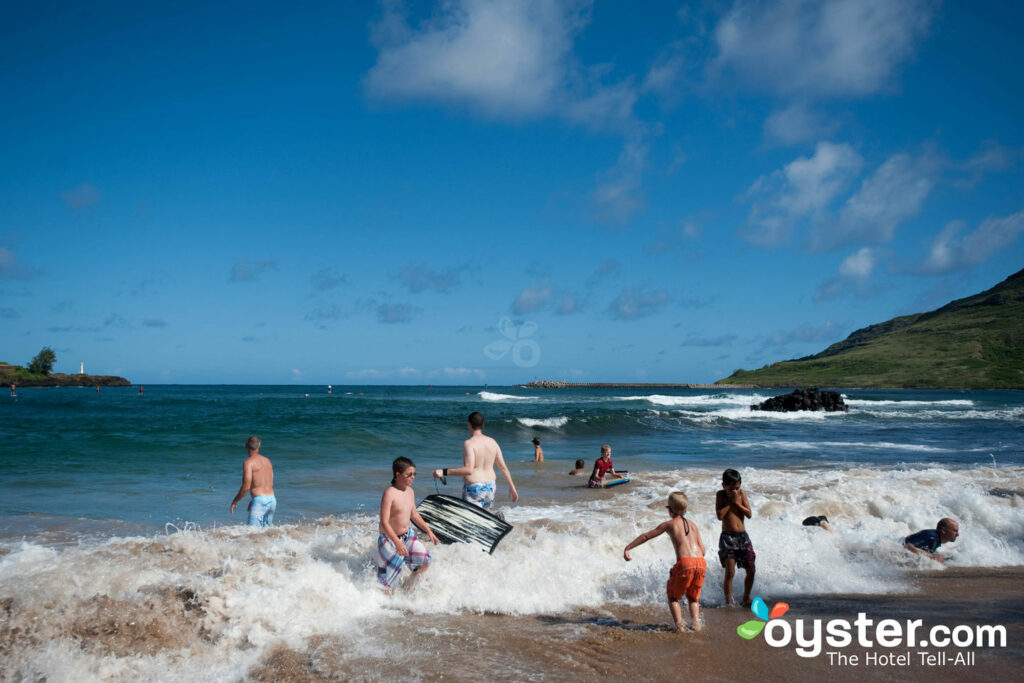
Annual beach trips filled with sandcastle building, boogie boarding, and hot dog eating are some of the most family-friendly vacations. But, while beaches can mean refreshing dips and lovely sunsets, they also pose several dangers. While this is true for beachgoers of all ages, children are particularly at risk for ocean-centric hazards. We've rounded up seven of the prominent issues to be aware of and vigilant for on your next beach trip, so you can enjoy the surf and the sand without stress.
Notice: Undefined offset: 4 in /nas/content/live/stagingstmllc/wp-content/plugins/smartertravel-shared/includes/ads/includes/api.php on line 92
Notice: Undefined offset: 5 in /nas/content/live/stagingstmllc/wp-content/plugins/smartertravel-shared/includes/ads/includes/api.php on line 92
Notice: Undefined offset: 6 in /nas/content/live/stagingstmllc/wp-content/plugins/smartertravel-shared/includes/ads/includes/api.php on line 92
Notice: Undefined offset: 4 in /nas/content/live/stagingstmllc/wp-content/plugins/smartertravel-shared/includes/ads/includes/api.php on line 98
Notice: Undefined index: pass_through_args in /nas/content/live/stagingstmllc/wp-content/plugins/smartertravel-shared/includes/ads/includes/api.php on line 158
Notice: Undefined index: wrapper in /nas/content/live/stagingstmllc/wp-content/plugins/smartertravel-shared/includes/ads/includes/api.php on line 159
Notice: Undefined offset: 4 in /nas/content/live/stagingstmllc/wp-content/plugins/smartertravel-shared/includes/ads/includes/api.php on line 92
Notice: Undefined offset: 5 in /nas/content/live/stagingstmllc/wp-content/plugins/smartertravel-shared/includes/ads/includes/api.php on line 92
Notice: Undefined offset: 6 in /nas/content/live/stagingstmllc/wp-content/plugins/smartertravel-shared/includes/ads/includes/api.php on line 92
Notice: Undefined offset: 4 in /nas/content/live/stagingstmllc/wp-content/plugins/smartertravel-shared/includes/ads/includes/api.php on line 98
Notice: Undefined index: pass_through_args in /nas/content/live/stagingstmllc/wp-content/plugins/smartertravel-shared/includes/ads/includes/api.php on line 158
Notice: Undefined index: wrapper in /nas/content/live/stagingstmllc/wp-content/plugins/smartertravel-shared/includes/ads/includes/api.php on line 159
Notice: Undefined offset: 4 in /nas/content/live/stagingstmllc/wp-content/plugins/smartertravel-shared/includes/ads/includes/api.php on line 92
Notice: Undefined offset: 5 in /nas/content/live/stagingstmllc/wp-content/plugins/smartertravel-shared/includes/ads/includes/api.php on line 92
Notice: Undefined offset: 6 in /nas/content/live/stagingstmllc/wp-content/plugins/smartertravel-shared/includes/ads/includes/api.php on line 92
Notice: Undefined offset: 4 in /nas/content/live/stagingstmllc/wp-content/plugins/smartertravel-shared/includes/ads/includes/api.php on line 98
Notice: Undefined index: pass_through_args in /nas/content/live/stagingstmllc/wp-content/plugins/smartertravel-shared/includes/ads/includes/api.php on line 158
Notice: Undefined index: wrapper in /nas/content/live/stagingstmllc/wp-content/plugins/smartertravel-shared/includes/ads/includes/api.php on line 159
Notice: Undefined offset: 4 in /nas/content/live/stagingstmllc/wp-content/plugins/smartertravel-shared/includes/ads/includes/api.php on line 92
Notice: Undefined offset: 5 in /nas/content/live/stagingstmllc/wp-content/plugins/smartertravel-shared/includes/ads/includes/api.php on line 92
Notice: Undefined offset: 6 in /nas/content/live/stagingstmllc/wp-content/plugins/smartertravel-shared/includes/ads/includes/api.php on line 92
Notice: Undefined offset: 4 in /nas/content/live/stagingstmllc/wp-content/plugins/smartertravel-shared/includes/ads/includes/api.php on line 98
Notice: Undefined index: pass_through_args in /nas/content/live/stagingstmllc/wp-content/plugins/smartertravel-shared/includes/ads/includes/api.php on line 158
Notice: Undefined index: wrapper in /nas/content/live/stagingstmllc/wp-content/plugins/smartertravel-shared/includes/ads/includes/api.php on line 159
1. Rip Currents and Undertow
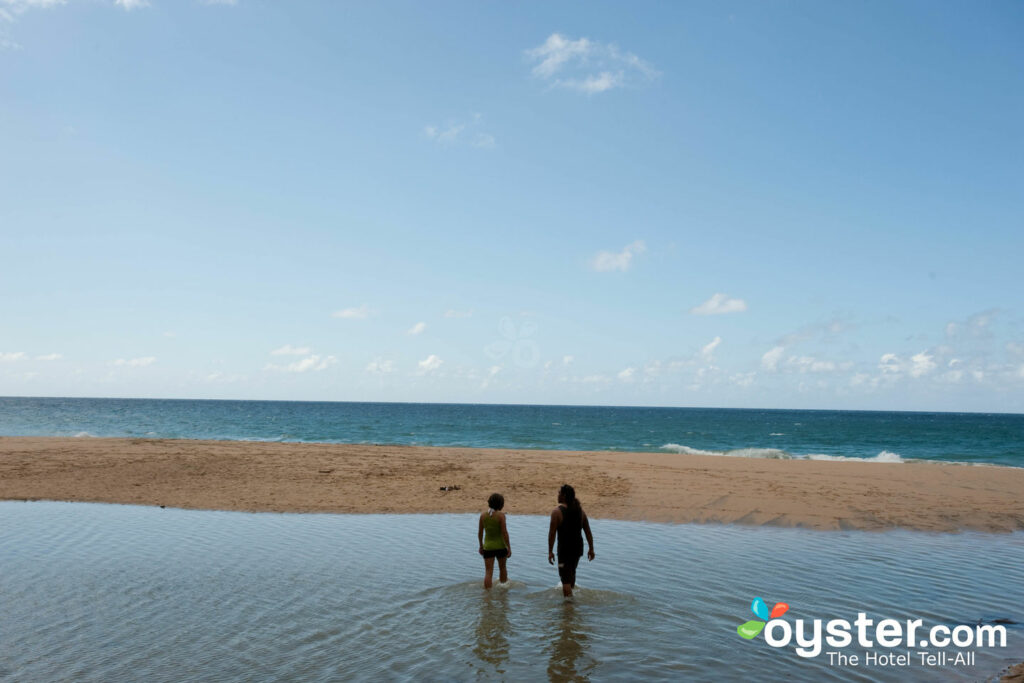
According to the National Ocean Service, rip currents make up more than 80 percent of rescues performed by lifeguards at beaches. So what exactly are they? Rip currents are powerful, narrow channels of water that extend from the shoreline and flow into the ocean. These swift-moving currents can quickly pull swimmers out to sea. If caught in one, the NOS recommends not fighting it, swimming parallel to the shore, and back to land at an angle. Notable spots for strong rip currents include Hanakapiai Beach in Hawaii and Playa Zipolite in Mexico.
Though often incorrectly labeled the same as rip currents (which are also different from rip tides), undertow refers to the backwash of breaking waves that can sometimes pull people, often children, back and make them susceptible to immersion from incoming waves. This leads to the feeling of being pushed underwater.
2. Too Many People
Waikiki Beach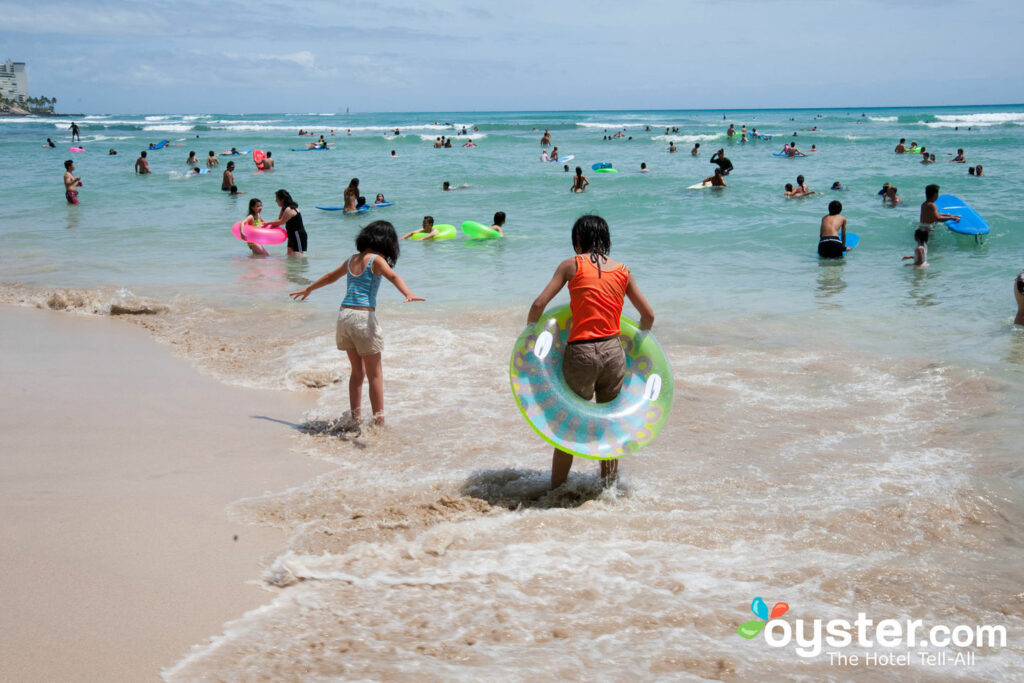
Children’s curiosity is vital for learning, but it can prove disastrous at crowded beaches. Every year kids quickly escape from their parent’s view to head into the water or down the beach, resulting in parents’ instant panic. If beaches are especially crowded, weaving through chairs and sand toys to find your little one, while scanning the ocean, is even more difficult. Attempt to find a spot on the beach where you can always keep an eye on kids, and give them a plan in the event they get lost. If there’s a lifeguard on the beach, tell them to find the lifeguard and stick with them.
Be sure to read: 8 of the Most Crowded U.S. Beaches and Where to Go Instead
3. Shore Breaks
Beach at the Villa Del Palmar Beach Resort & Spa, Cabo San Lucas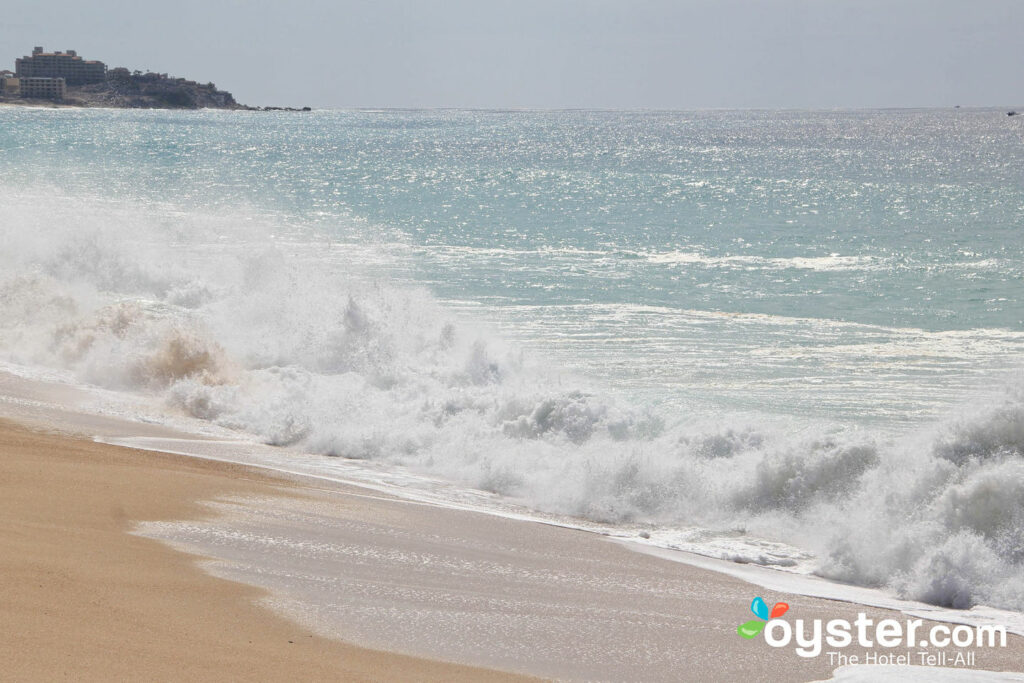
Simply put, shore breaks are waves that break directly on, or nearly at, the shore, rather than at the sand bar. When this occurs, water can appear deeper than it actually is, resulting in swimmers diving head-first into shallow water and resulting in injuries. Waves can also break abruptly and throw swimmers down to the bottom, causing neck, back, and spinal injuries. As with most water dangers, children are more vulnerable to these harmful effects. Swimmers of all ages should keep hands in front of them when in breaking waves to protect the head and neck.
4. Jellyfish, Stingrays, and Sharks
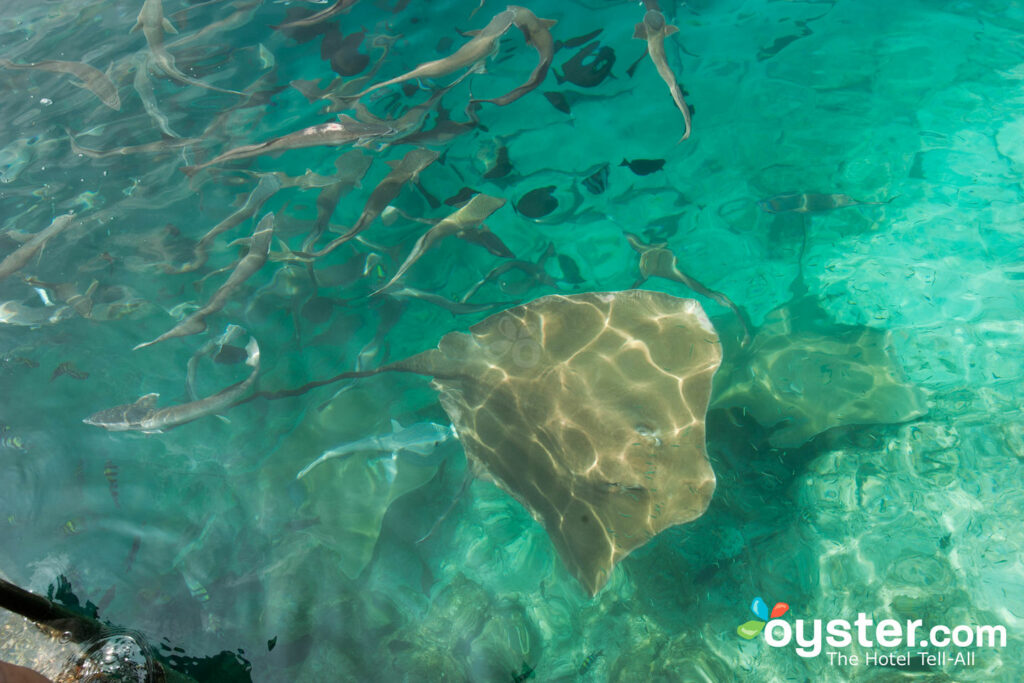
Marine life may be magnificent, but certain species can be more hazardous than others. Although shark attacks are extremely rare, it’s still wise to be cautious of these sharp-toothed creatures. Most attacks occur within 100 feet of shore, and risks can be minimized by not splashing around too much, not wearing shiny metal jewelry, not swimming with open wounds, swimming in groups, keeping close to shore, and avoiding swimming when it’s dark. Most shark attacks have been concentrated in Florida, Hawaii, Australia, and South Africa, according to National Geographic.
Young swimmers are far more likely to encounter jellyfish during their beach trip. As water temperature rises, jellyfish blooms are increasing, and these creature can cause painful stings or even death. Box jellyfish, which mostly live off Northern Australia, are the most deadly, with toxic venom that attacks the heart, nervous system, and skin cells. Victims can go into shock or cardiac arrest and drown within a few minutes. Others, like those often found in North America, can have stings that cause rashes and muscle cramps. Beachgoers should look out for any warning signs and avoid touching jellyfish that have washed to the shore, as they can still sting.
As for stingrays, it’s generally safe to swim alongside them — tourists can even kiss and pet them in Grand Cayman — but they can still cause trouble. These creatures often bury themselves under sand, and when stepped on, will flick their stingers at unsuspecting ankles. It’s best to shuffle your feet in the sand to alert the rays and cause them to swim off.
5. Water Pollution and Debris
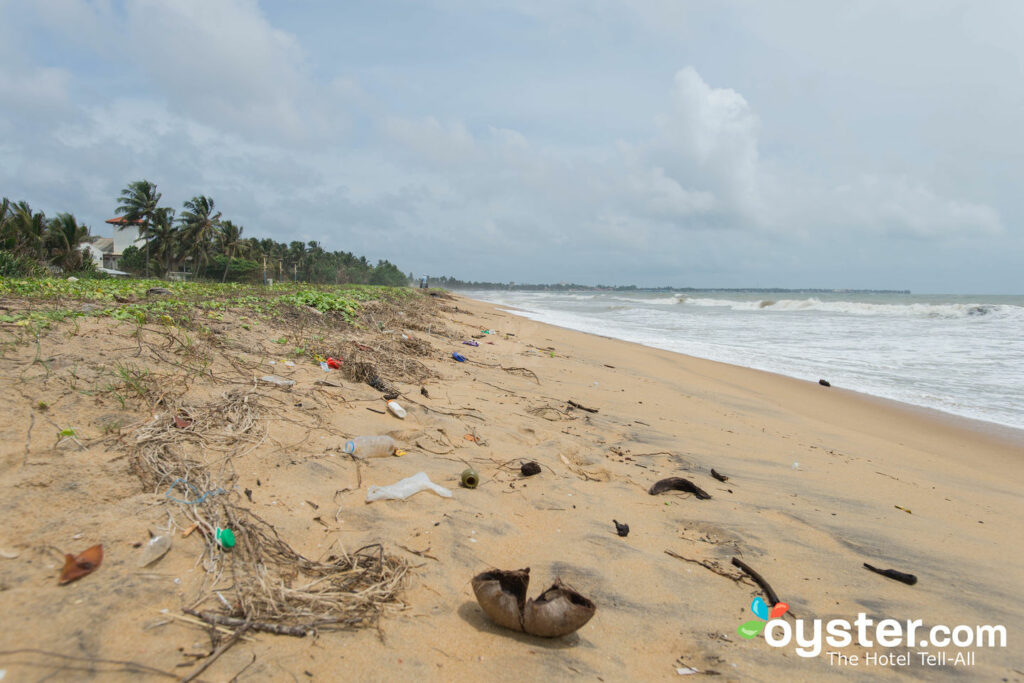
Water contaminated from untreated sewage can cause high levels of bacteria that can lead to infections, hepatitis, and even death. Water pollution and debris may also result in cuts and scrapes from walking on things like broken glass and metal scraps. It’s always wise to check watery safety information or see if any signs are posted alerting visitors to contaminated waters. Chowpatty Beach in Mumbai is one of the world’s most notoriously polluted spots, but they’re also found in the Caribbean and United States.
Check out our list of five of the dirtiest beaches in the world here.
6. Heat and Sun
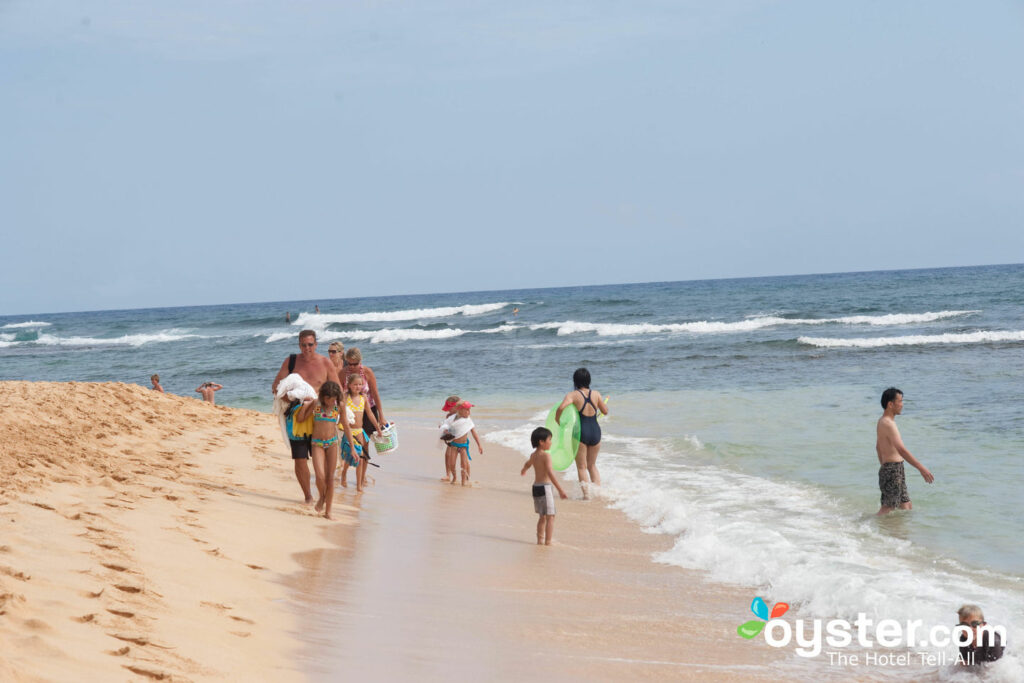
Not all dangers are found in the water, as the sun and heat can often do far more damage to kids at the beach. Though, ocean water reflecting the sun only increases the intensity of UV radiation. From heat exhaustion to sunburn, the sun and high temps can combine to not only spoil a beach day, but lead to serious issues. Fortunately, there are numerous precautions to keep little ones cool and burn-free. Broad-spectrum sunscreens — with the higher SPF, the better — staying in the shade, wearing a hat and protective clothing, and drinking lots of water will keep danger at bay.
Visitors to beaches near the equator should be extra cautious, as they receive stronger and more direct sunlight. Some notable destinations on or close to the equator include Brazil, Costa Rica, Bali, and the Maldives.
7. Harmful Algal Blooms
Lake Erie algal bloom; Image courtesy of NOAA Great Lakes Environmental Research Laboratory/Flickr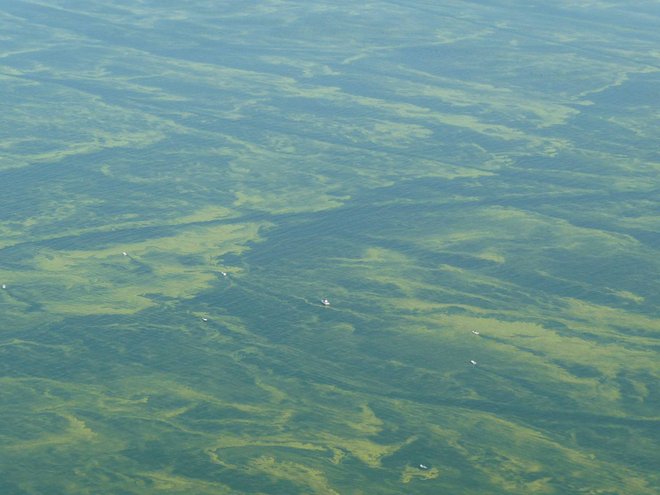
Though you’ll likely be able to spot these, harmful algal blooms can be toxic to both marine life and humans — often from ingesting contaminated shellfish. While most forms of algae are perfectly safe, a small percentage can quickly grow and release neurotoxins. Scientists can predict and measure algae and their blooms, so always do some digging if you come across dense patches of algae — which can be green, red, or brown in color. It’s also a good idea to avoid exposure with open cuts and thoroughly shower after being in water with algae.
You’ll Also Like:
- 7 Gorgeous Beaches Where You Shouldn’t Swim
- How to Plan a Multi-Generational Family Vacation
- Our Favorite Family Vacation Destinations in the U.S.
All products are independently selected by our writers and editors. If you buy something through our links, Oyster may earn an affiliate commission.